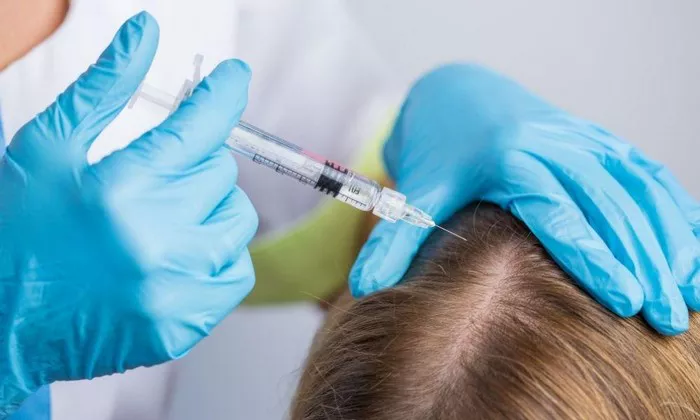Platelet Rich Plasma (PRP) therapy has emerged as a popular and effective treatment for hair loss, leveraging the body’s natural healing processes to stimulate hair growth. This innovative approach involves using a patient’s own blood to extract platelet-rich plasma, which is then injected into the scalp. But how much does PRP for hair loss cost, and what factors influence its pricing? This article delves into the details to provide a comprehensive understanding of the financial aspects of PRP hair loss treatment.
The Basics of PRP Hair Loss Treatment
PRP therapy involves drawing a small amount of blood from the patient, which is then placed in a centrifuge to separate the plasma rich in platelets. These platelets contain growth factors that are essential for healing and regeneration. Once prepared, the PRP is injected into the scalp, targeting areas experiencing hair thinning or loss. The growth factors in the PRP work to stimulate hair follicles, promoting hair growth and thickness.
Factors Influencing the Cost of PRP Treatment
Several variables can influence the cost of PRP hair loss treatment, making it essential for prospective patients to understand what they might expect to pay.
1. Geographical Location
The cost of medical treatments can vary significantly based on location. PRP therapy in major metropolitan areas or regions with a high cost of living may be more expensive compared to smaller towns or regions with lower living costs.
2. Clinic Reputation and Expertise
The reputation and expertise of the clinic or practitioner administering the PRP treatment can also impact the cost. Highly reputable clinics with experienced specialists may charge higher fees due to their expertise and track record of successful treatments.
3. Number of Sessions Required
PRP hair loss treatment typically involves multiple sessions to achieve optimal results. The total cost will depend on the number of sessions recommended by the practitioner. Most patients require a series of three to six treatments spaced about four to six weeks apart.
4. Individual Patient Needs
Each patient’s condition and response to treatment can vary. Some patients may need additional treatments or maintenance sessions to sustain the results, affecting the overall cost.
5. Combination with Other Treatments
In some cases, PRP therapy is combined with other hair loss treatments such as microneedling, topical medications, or laser therapy. The combined approach can enhance results but also increase the total cost.
Average Cost of PRP Hair Loss Treatment
The cost of PRP hair loss treatment can range widely. On average, patients can expect to pay between $500 to $2,000 per session. However, the total cost for a complete treatment plan, including multiple sessions, can range from $1,500 to $6,000 or more.
Breaking Down the Costs
1. Initial Consultation: Some clinics may charge an initial consultation fee, which can range from $100 to $250. This fee may or may not be included in the total treatment cost.
2. Per Session Cost: As mentioned, each PRP session can cost between $500 and $2,000. The exact price will depend on the factors previously discussed.
3. Total Treatment Plan: Considering that most patients require a series of sessions, the total cost for a complete PRP treatment plan can be substantial. For example, if each session costs $1,000 and a patient requires five sessions, the total cost would be $5,000.
See Also: How to Stop Curly Hair from Falling Out: A Comprehensive Guide
4. Maintenance Sessions: Some patients may opt for maintenance sessions to sustain the results, typically once or twice a year. These sessions can add to the overall cost but help in maintaining the benefits of the treatment.
Is PRP Hair Loss Treatment Worth the Cost?
When evaluating the cost of PRP hair loss treatment, it’s essential to consider the potential benefits and compare them to other available options.
Benefits of PRP Hair Loss Treatment
1. Minimally Invasive: PRP therapy is a non-surgical, minimally invasive procedure with little to no downtime, making it an attractive option for many patients.
2. Natural Solution: Since PRP uses the patient’s own blood, there is a lower risk of allergic reactions or complications.
3. Effective Results: Many patients report significant improvements in hair density and thickness after completing the recommended series of treatments.
Comparing PRP to Other Treatments
1. Hair Transplant Surgery: Hair transplant surgery can be more expensive than PRP therapy, with costs ranging from $4,000 to $15,000 or more, depending on the extent of the procedure. However, hair transplants provide permanent results, whereas PRP may require ongoing maintenance.
2. Topical and Oral Medications: Medications like minoxidil (Rogaine) and finasteride (Propecia) are less expensive options but may require long-term use and have varying effectiveness.
3. Laser Therapy: Low-level laser therapy (LLLT) devices can cost between $200 to $1,000 and offer a non-invasive alternative, though results can vary and may not be as significant as PRP.
Insurance and Financing Options
PRP hair loss treatment is generally considered a cosmetic procedure, meaning it is not covered by most health insurance plans. However, many clinics offer financing options to help patients manage the cost. These may include payment plans, medical credit cards, or third-party financing companies that specialize in healthcare expenses.
Conclusion
The cost of Platelet Rich Plasma (PRP) hair loss treatment can vary widely based on several factors, including geographical location, clinic reputation, and the number of sessions required. While the average cost per session ranges from $500 to $2,000, the total cost for a complete treatment plan can be significant. Despite the expense, many patients find PRP therapy to be a worthwhile investment due to its minimally invasive nature, natural approach, and effective results. When considering PRP for hair loss, it’s essential to weigh the costs against the potential benefits and compare it to other available treatments. Additionally, exploring financing options can make PRP more accessible for those seeking to improve their hair health and appearance.


